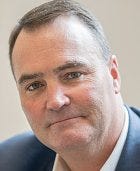Channel Futures MSP 501 Regional Lists Highlight IT's Important Trends
Channel Futures regional lists give vendors and MSPs an easy way to identify their next partner or acquisition target.
July 17, 2023

Customers typically want the same things from their MSP: trusted advice; a secure computing environment; fair, predictable pricing; productivity improvements and operational efficiencies; and great customer service. But how MSPs choose and sell those services, deal with customers, and decide who to acquire or where to expand differs from region to region. Success or failure depends on how an MSP handles those differences, no matter how subtle or glaring.
Throughout this week, we’ll deliver regional breakout lists of the Channel Futures MSP 501 ranking and survey of the top managed service providers in the world. (Get started here.) We’ll cover the Northeast, South, Midwest and West of the U.S. – breaking down winners by state – as well as Canada, EMEA (Europe, Middle East and Africa) and APAC (Asia Pacific). The regional lists give vendors and MSPs an easy way to identify their next partner or acquisition target.
This year’s Channel Futures MSP 501, like the 16 before it, continues to evolve into much more than a ranking. It uses key data on the state of the MSP market during 2022 to highlight the solutions, sales and marketing strategies, operational improvements and customer trends that are driving growth today. The results show how important the last 18 months will be for the future of the IT industry and the monumental role MSPs have in shaping it, no matter what region they operate in.
Dig Deep Into the Channel Futures MSP 501
During the next six months, Channel Futures will continue interviewing Channel Futures MSP 501 winners to explore their successes, challenges, economic environments, best practices and technologies. How MSPs operate in different parts of the world, and the cultural differences of their partners and customers, is becoming increasingly important as more of them are acquired or expand into new areas. Here are some insights on the economy and business trends from two MSPs working in different regions of the U.S.
The 2023 Channel Futures MSP 501 rankings have been released! Get started here with our series of slideshows that rank the winners. |

Thrive’s Rob Stephenson
Rob Stephenson, CEO of Thrive, is a good place to start. Based in Foxborough, Massachusetts, Thrive ranked No. 21 on the Channel Futures MSP 501 global ranking and No. 1 in Massachusetts. Those numbers, though, provide just a small fraction of Thrive’s story. The MSP acquired 19 companies in the last seven years, giving it a wide presence across the U.S. (especially on the Eastern Seaboard), the U.K., the Philippines and Canada.
“Every region is different,” Stephenson said.
Take regional economies. Stephenson sees spending in the U.K. and Asia stagnating or decreasing just a bit. Spending by larger companies and enterprises in the Northeast has flattened, although it’s not decreasing. That’s a big difference compared to the first half of 2022, when money was cheap and interest rates were low.
“Those companies just grew, grew, grew, hired, hired, hired,” he said, adding that many of them are leaving vacant positions unfilled, opposed to laying off employees. “We’re just seeing a flattening of that business where everybody’s taking a wait-and-see approach to what the Fed decides to do next.”
Northerners Head South for More than Weather
The South, especially big cities in Texas and Florida, tells a different story. Favorable tax structures and other corporate benefits, as well as an influx of transplants, have shifted money and investment from the North to below the Mason-Dixon line.
“The buildings going up, the towers going up, the investments are going down there,” he said, mentioning Miami, Dallas and Nashville.
Every region, though, experiences its own …
… micro and macro differences. Those bring up interesting comparisons.
For example, Brian Curtis, owner of DominionTech Services, an MSP in Williston, Vermont, saw something much different than Stephenson described, but on a much smaller scale. Following the brunt of the pandemic, a handful of startups from big cities such as Boston and New York moved north. Some of those include bio and other tech companies, as well as BETA Technologies, an electric aircraft manufacturer. They all went on hiring sprees, making it even tougher for DominionTech – No. 326 on the Channel Futures MSP 501 and No. 1 in Vermont – to find good employees.
Channel Futures MSP 501: National MSPs Increase Competitive Pressures
While some of those companies generated great business for DominionTech, others eventually transitioned to national MSPs after receiving additional funding and expanding. Over the years, several of Curtis’ competitors have also rolled into bigger service providers such as New Charter Technologies (No. 47) and Konica Minolta Business Solutions U.S.A. (No. 67), increasing the local competition. But, despite the advantages those bigger companies might have, the integrations don’t always go smoothly, he said. Some the previous owners also lose focus, especially on the sales side, he added. That’s where smaller MSPs like DominionTech see opportunity.

DominionTech’s Brian Curtis
“The advantage for us and other privately owned MSPs is we can adjust faster,” Curtis said. “While they’re dealing with integration and other issues, that’s our chance to take up some market share.”
That’s not always easy. Some of the local MSPs that have sold to a national have not raised their prices beyond pre-pandemic levels, despite inflation, Curtis said. Some prospects are surprised by DominionTech’s higher prices, but most existing clients understand the need to raise them.
“They want us to be able to keep the right people,” he said. “If you’re doing a good job, you shouldn’t be afraid to raise your prices to meet the market.”
Nor Ready to Sell, But …
Curtis, who runs the business with his wife, fields about three or four calls a week from national MSPs “looking to talk.” That never would have happened four years ago, when “no one cared about Vermont as a market,” he said. Curtis still has some goals he wants to achieve before selling, but it is something that crosses his mind every now and then.
“I’m not totally in that headspace, but it certainly is something I don’t want to ignore,” he said. “I don’t know if we’re in a bubble or a peak here, but I want to make sure we don’t miss out on something that might not happen in the future.”
Get started with the 2023 Channel Futures MSP 501 breakdown by region here.
Want to contact the author directly about this story? Have ideas for a follow-up article? Email Jeff O’Heir or connect with him on LinkedIn. |
About the Author(s)
You May Also Like


